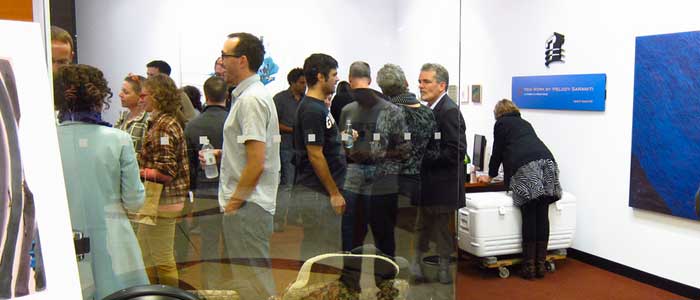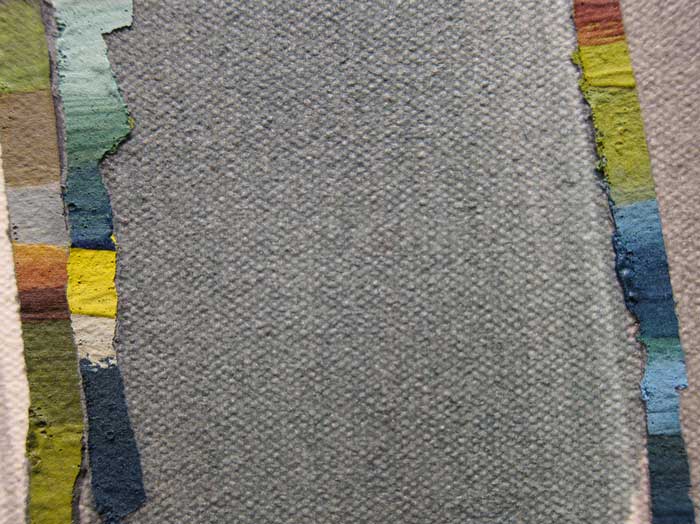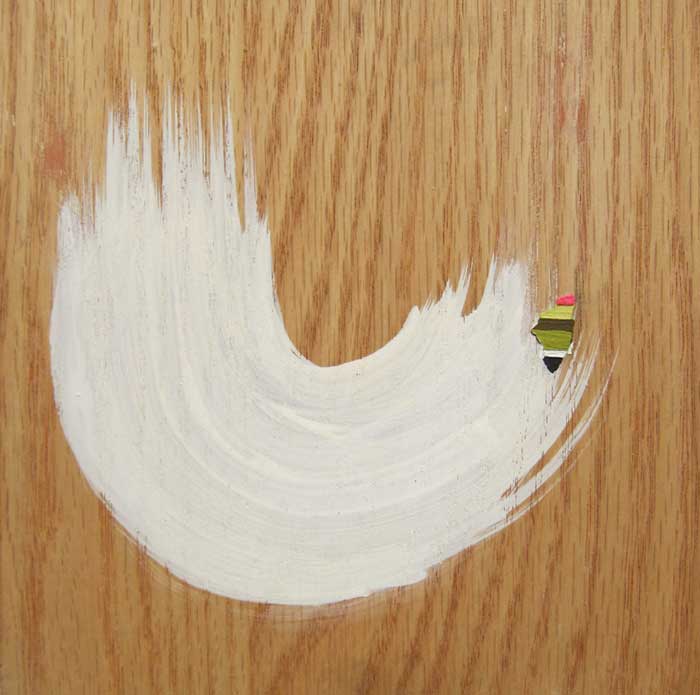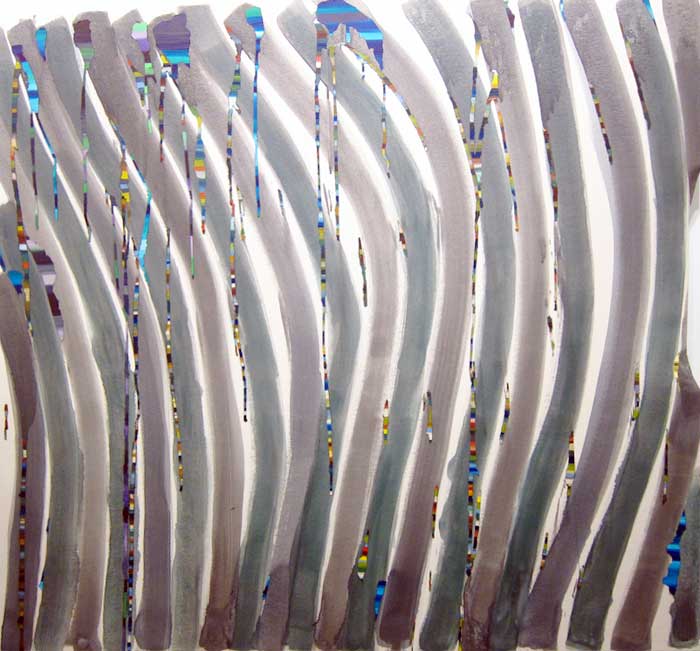Altered Alterations: New Paintings by Melody Saraniti, curated by Sarah Krepp
Location: Gallery 175, 175 West Jackson (Ground floor) in Chicago
Dates: Now to Wednesday, November 30, 2011 – 6:00pm
Gallery Hours: M-F 9:00-2:00 or by appointment
Saraniti: “You know, the place I stopped was perfect because it’s where the bus stops, so there were no cars. It was absolutely the best timing ever— ”
Me: “To combust?”
Saraniti: “Yes! It was perfect.”
On a Chicago October night so mild the word “unseasonably” seems an insult,
I met up with artist Melody Saraniti just outside of Ipsento Coffee House. Along with the fragrance of freshly roasted coffee and fallen autumn leaves, traces of Mexican food mingled in the air—a perfume only a neighborhood can pull off. It was this last smell of delicious food that triggered a memory for artist Melody Saraniti. And that’s why she shared with me the time she almost started on fire in front of Arturo’s Tacos on the corner of Western and Armitage. Note to self: I must try those tacos.
“I decide to pull over right on Western,” explained Melody. “I get off my scooter and reach over for a bag that’s in this compartment, and a guy who’s waiting for the bus says to me, ‘You know your scooter’s on fire?’ As I was sitting there, I was thinking, ‘Tacos! Oh, burning! Oh, tacos!’”
From the Garden of Eden to Snow White to The Hangover, the dangers associated with eating and drinking have been well documented in our culture. Up until that night, however, I had never heard a story involving such peril over the mere smell of food. This makes everything so much more dramatic for if Pepé le Pew or even Proust were artists, would their art come by way of process abstraction? Would it revel in spontaneous deliberation? What about comical irony? Le yes?
Entitled “Altered Alterations,” Saraniti’s newest body of work hangs on the walls of Gallery 175 like windows into a strange and eerily familiar world where the most unexpected things are rendered visual fodder for contemplation.

“The closer you get, you see it’s surprisingly labor-intensive,” Sarah Krepp, curator for Gallery 175 quietly described in my ear the perfect opening salvo of a commentary worth charging for. I smiled and nodded in agreement. “The drip and slap-dash of Pollock— ” That was it. With a quick apology and with just as much grace as her entrance, she exited, pulled away to chat with more familiar faces and do what she has to do on opening night as curator.
Alone again and now reminded of Jackson Pollock and his drips and slap-dash spills of paint, I let my mind wander. But it did not. What was before me was not Pollock.

Everything about these canvases conveyed a more careful deliberateness. Large swaths of paint unfurling, like delicate tresses up-close or far away, took up most of the canvas space. Nestled in unexpected places were strange rainbows of color juxtaposed against the grain of the more dominant patterns.
These large canvases scored carefully with great swaths of color—detailed, unassuming but monolithic in their consumption of space—hemorrhaged drops of color spilling down to wherever gravity took them; in creating the more contemplated panes came the unplanned, the unintended accidents, the drips of paint with their more considered brush strokes.
Except there was more. In the hands of Saraniti, these capricious droplets incur purpose. They benefit the larger piece by providing not just a place for technique but permission to exercise technique.
Saraniti calls it “spontaneous deliberation.” Like a more refined understanding of luck, it takes a lot of work to arrive at the sweet spot of what most refer to as accident. In plainer terms, wherever there’s a drip of paint, Saraniti paints an opposing pattern in the drip. Her paintings range from large natural gesso canvases to much smaller wooden panes. The effect is the same, however, with grids emerging in the aftermath. “There are no hierarchies. The surface is treated evenly,” explains Saraniti.
This democratic landscape of what are essentially grids might seem, well, boring. This would be the case to the casual observer but for a nagging feeling of something more. Saraniti clues us into what is so visually compelling about the equanimity of the grids with more information about the process and what she was thinking at the time.
“What does that brush stroke mean? What is the emotional content inside a painting? Do the gestural marks equal more emotion? Do the drips allude to that? And what happens if you take those loaded, emotional gestures and go back in and do something very meticulous and allude to the grid? Does it make it more cerebral or more or less emotional?” This is when Saraniti’s art picks up airs of irony and even comedy.

Take for instance her piece entitled, “6” – a large, white brush stroke curved and uncomplicated save for a little scrap of geography looking a little like South America. Something about the piece seems happy, silly even. When compared to the much more serious and grandiose presence of “2,” the little white swoosh becomes…cute and still contemplative.

This power of meaning as the pieces contextualize each other reflects the process nature of Saraniti’s abstract art: Each piece is not so much a discreet entity but a product of what was created before and after…and so on. That’s also why so many of her pieces take on a somewhat incomplete identity with the numbered states, for the process of their creation continues on outside of the studio. Overheard conversations, thoughts or lists jotted down in a journal, messages in a bottle—“the titles need to incubate a little bit,” explains Saraniti. While the cute swoosh is still nameless, No. 2 is now “Private Crumbs.” Taken from an overheard conversation, the title is almost as provocative as the painting itself.
Saraniti’s work remains on display at Gallery 175 until November 30th.